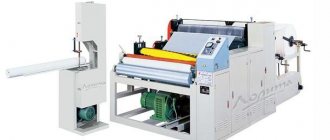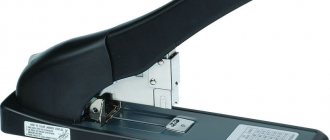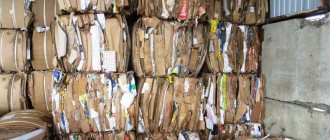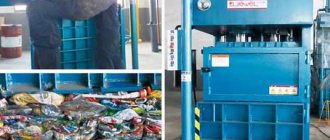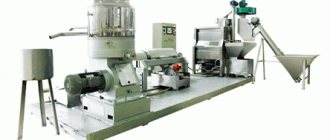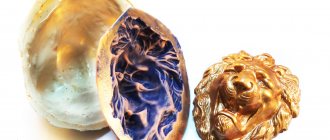Toilet paper is the most common personal hygiene item. This is a product necessary in the everyday life of every person. It will always be in demand among buyers. Toilet paper production is a business that has good potential. It can be profitable regardless of the territorial location of production.
In its familiar form, this personal hygiene item appeared in the United States only at the end of the 19th century. Paper punching was introduced in Germany in 1928. In the USSR, the first production facility opened in 1968 in the Leningrad region and is still operating. At first, the demand for paper innovation among Soviet citizens was very modest. After an advertising campaign, advertisements were played before the film screening, sales began to grow rapidly.
We are researching production technology. Let's look at the equipment needed for this. We will calculate production costs and payback periods.
Equipment for the production of toilet paper
First, let's decide on the equipment necessary for the production of toilet paper. Its variety can increase depending on the range of products you intend to produce. We’ll look at the units you can’t do without.
- Paper making plant. Responsible for preparing raw materials and forming paper pulp.
- Roll cutting device. Some models of this device allow you to adjust the size of the workpiece.
- Unwinding and reeling installation. The paper becomes soft and durable due to the mechanical action of the machine. The paper becomes multilayered after soldering several layers.
- Packaging line. Paper labels or polyethylene are used.
The production process requires high-quality equipment. It is important to find a good supplier and provide for the possibility of regular maintenance. This is the key to the health and longevity of your business. Purchasing used units increases the risk of production interruption, which leads to unexpected costs.
Product certification
Another important stage that a new manufacturer must go through is to obtain a document confirming that toilet paper meets the requirements of the national standard. However, before drawing up such paper, the entrepreneur needs to undergo an inspection by Rospotrebnadzor and receive a sanitary and epidemiological certificate confirming the safety of the product. After this, you should contact an accredited certification center and issue a certificate of product compliance with GOST R 52354-2005 “Paper products for household and sanitary purposes.”
What is toilet paper made from?
Let's now figure out what toilet paper is made from. It’s even hard to imagine that in ancient times the “toilet” was made of cotton. The main raw material for production was old clothing. Nowadays, the most common material is waste paper. This is a secondary raw material, which is divided into different grades, depending on the primary material being processed. The low cost of waste paper and the ease of its processing make it possible to obtain an inexpensive product.
The benefits of producing toilet paper from waste paper are that it is cheap, which means there are no problems with sales. There is an opportunity to gain support from the government and environmentalists through the recycling process. The theme of eco-products can be a good marketing proposition.
Cellulose is the most common material for the production of expensive toilet paper. They produce both classic white and colored paper. Cellulose is supplied in rolls of 1-2 meters. The third raw material option is a combination of waste paper and cellulose.
If you plan to produce paper on cardboard cores, the cost of their production will be added, or you can order ready-made ones. Packaging material: polyethylene, paper.
How to determine the level of demand?
Paper making machine for toilet paper.
To determine the level of demand, you need to:
- Set the region where toilet paper will be supplied. For example, these are Novosibirsk and the Novosibirsk region with a population of 1.5 and 2.8 million people;
- Determine the region's need for toilet paper. Estimated data – 1 roll for two people per week. Accordingly, the need of Novosibirsk and the region is 750 and 140 thousand rolls of toilet paper per week;
- The presence of competitors, their production capacity, as presented on the market. In this case, you will have to carefully analyze both the Internet and negotiate with potential contracting customers.
Additionally, you can consider sales in the nearest constituent entities of the federation. But it won’t be easy to get there without having some strong positions in the region where you are located.
If the negotiations are successful, agreements of intent to cooperate have been signed, the previously requested volumes allow the enterprise to achieve acceptable profitability, you can register and purchase equipment. It is recommended to do this after a thorough study of the market and a real assessment of the situation.
Toilet paper production technology
There are two types of production process.
- The whole production cycle. The input is recyclables, the output is finished products.
- Shortened production cycle. At the entrance there is cellulose in rolls. It is rewound, cut and packaged.
The cost of finished products will be lower during the entire production cycle. This is due to the low cost of waste paper. However, additional costs will be required for equipment and the supply of recyclable materials.
Let's take a closer look at the stages of the entire production cycle.
- Preparation of recyclable materials. The material goes through a purification stage, is crushed and mixed with water. The resulting mass is sent for additional purification.
- Washing of raw materials. The mixture of paper and water enters the tank for further repeated washing. Here the final properties, qualities and, accordingly, the price of the product are laid down.
- Grinding After the washing stage, water is again added to the composition. The grinding process occurs until a thick, homogeneous mass is formed.
- Finalizing the mixture. The concentration of the paper component in the mixture is adjusted to the required parameters.
- Formation of roll blanks. Here, excess moisture is removed from the mixture and it is fed into the dryer. The resulting paper is cut, rolls are formed and cut.
- Unwinding. The blank reels are transferred to the unwinding unit. Here they are wound into rolls of the required size, and the paper is also perforated or embossed. The surface is leveled and the paper is given a given density. At the same time, the edges of the roll are glued, which prevents it from unwinding.
- Slicing. The resulting roll blanks are cut, and we obtain rolls of finished toilet paper.
- Package. There is a different algorithm for different types of products. The rolls are covered with a paper label, or several rolls are wrapped in polyethylene.
Wood processing
From the very morning, spruce wood begins to be delivered to the plant. It is delivered here by rail from all over north-west Russia - from Karelia, Arkhangelsk, Vologda. The wood is unloaded and stacked in stacks at the “exchange” - the place where raw materials are stored.
Here trunks with a diameter of up to 70 centimeters await their turn. They are not suitable for furniture production. But they are just right for paper. The “sawmill” comes into operation - the area where the logs undergo primary processing. They are divided into parts and sent to the wood preparation shop. The debarking drum begins to make noise. So much so that you can’t hear your own voice. Therefore, the workers here exchange gestures - turn it on, turn it off, add power. Water is supplied to the drum. Under its pressure, the trunks rub against each other, the bark is removed. Smooth and clean - the tree remains in this form for just a few minutes. Further along the conveyor it goes to the chipping machine. The output is local “gold” – wood chips. Almost three thousand cubic meters of chopped wood is stored in the open area of the plant. The standard is chips 25 millimeters thick, no more and no less. After sorting, the pulp base is sent to the digester. The first stage is completed.
Business registration
Business registration includes the following steps:
- Registration of legal address . We select a suitable non-residential premises that is registered with the municipal authorities and has an address.
- Renting a building or purchasing it.
- The registration procedure itself. There are two possible options here. Individual entrepreneurship (for small production). Limited Liability Company (for larger-scale production).
In addition, permits from the SES and fire safety supervision are required. Permission from Rostekhnadzor will also be required.
Giant rolls
The production of cellulose is the next stage at the plant. This is a closed and continuous process. The boilers here smoke around the clock. Their work is monitored using monitors. Pressure and temperature indicators are displayed on the screens. The heat inside the boilers rises to 155 degrees. Soda, sulfur and the “secret ingredient” – bisulfite acid – are added to the wood chips. It gives the paper softness and fluffiness. When the pulp is ready, it looks like a pureed apple. Within eight hours it is bleached and free of chemicals. The resin is removed so that the canvas does not stick to the shafts later. Now water is pumped out of the mass using a pump. Then the local “loom” - a paper-making machine - comes into operation. It is on it that a thin layer of future products is formed. The cruising speed is almost one kilometer per minute.
This makes a four-meter roll. This is “base paper” - it will later be used to make napkins, paper towels and other products. The color depends on the dye. Mostly pastel shades are used here. The most popular are turquoise and yellow. Workers at the enterprise use a remote control to control a crane with hooks. They remove the giant from the car and give him a ceremonial flight over the workshop. Now the product needs to be “reduced”, cut into formats, and sealed. Some of the rolls will be sent to customers from the Czech Republic, Germany, and Belarus. The rest will be left at the plant for the final stage in the sanitary products workshop.
Financial calculations
Let's draw up a rough business plan for the production of toilet paper. Let's determine the main expense items. We will calculate profits and payback periods.
How much money do you need to invest to organize production?
- 2 million rubles — approximate cost of equipment.
- 200,000 rub. — re-equipment of the production workshop.
- 150,000 rub. — obtaining licenses, preparing documentation.
Let's calculate the costs for 1 month of production.
- 75000 rub. - rental of premises.
- 600,000 rub. — the cost of raw materials for the production of toilet paper.
- 20,000 rub. - public utilities.
- 80,000 rub. - wages for workers (4 people).
- 30,000 rub. — purchase of additional equipment.
- 60,000 rub. — transportation of goods.
- 10,000 rub. - Unexpected expenses.
Total:
- Costs for purchasing equipment and setting up the production cycle - 2 million 350 rubles.
- Costs for 1 month. production process - 875 tr.
Payback of a toilet paper business
Now let's calculate the return on business.
From 30 tons of waste paper, we get 272,500 rolls (the weight of one roll is 110 g).
When the price of finished products is 5 rubles. per roll, we get 272500*5 = 1 million 362 tr.
Taking into account production costs, we get 1 million 362 thousand rubles. — 875 t.r. = 487 t.r. profit per month. Based on our calculations, the payback period will be about five months. If we take into account all the associated costs, the profitability of such a business will be about 10-15%. Based on these data, the real payback period is 1 year.
Search for investments
The most common options for seeking investment are obtaining a bank loan or attracting an investor. In the case of a loan, the payback period of the project will inevitably increase due to the need to pay interest. The positive thing is that the equipment needed to manufacture the product can act as collateral for the loan. Banks are more willing to issue significant amounts if there is collateral. Attracting an investor means reducing profits, since part of it will have to be given to the individual or company that invested in the project. This will also increase the payback period of the project.
A budding entrepreneur should pay attention to government support for small businesses: these programs operate in many regions. You will have to collect a large set of documents and spend time visiting various authorities, but it is worth it: as a result, you can receive significant subsidies for business development.
Russian toilet paper market and sales
In our country, the production of essential paper is widespread and is regulated by GOST “R52354-2005”. The times of scarcity of this product are over, now it is available to everyone. The Russian market for personal care products is developing rapidly. The growth is 7-9% per year, the growth trend continues.
Competition in the production of paper and hygiene products is quite high. Currently, there are about ten large companies, and a huge number of small ones. The population's demand is gradually shifting towards the consumption of higher quality and more expensive products, so the fate of many small producers of low-quality goods is sealed.
Sales are focused mainly on large wholesale buyers. This gives an advantage over small business owners. Without much effort, you can establish contacts with the owners of wholesale stores and sell your products through them.
First, it is important to create your brand. It must be recognizable and in demand by the buyer. Design the packaging, come up with a logo. Don’t forget to actively use the Internet to promote your product. Internet mailings and publication of product advertisements in all available ways work effectively.
Increased production implies an increase in the range of products. Therefore, it is very important to monitor the needs of customers.
There is an increasing demand among consumers for eco-friendly products. If you implement technologies in your production that will help preserve the environment, this will attract more interest in your products.
Location
The production location can be any.
The main thing: the workshop area is at least 150 square meters. m, ceilings - from 4 m, electricity, water supply and sewerage. The entire premises will be divided into three zones: the workshop itself with machines, a warehouse for raw materials and a warehouse for finished products. Convenient access and egress is welcome.
Marketing
Remember: your main buyer now is not a housewife who walks between the aisles in the supermarket, but a large wholesaler. He doesn’t need to be lured by bright, creative advertisements.
It is much more effective to use the usual, simple and effective, like a corkscrew, method: pick up the phone and start calling all the familiar wholesale bases. E-mail newsletters and advertising blocks in printed catalogs for wholesalers are included.
No, of course, housewives and retailers shouldn’t forget either: the product must be attractive to the consumer, memorable in the memory and delight everyone with its quality in order for it to be well bought. But, if we are talking specifically about production, our first goal is to gain trust from wholesalers. Leave TV advertisements and mail.ru banners for later.
